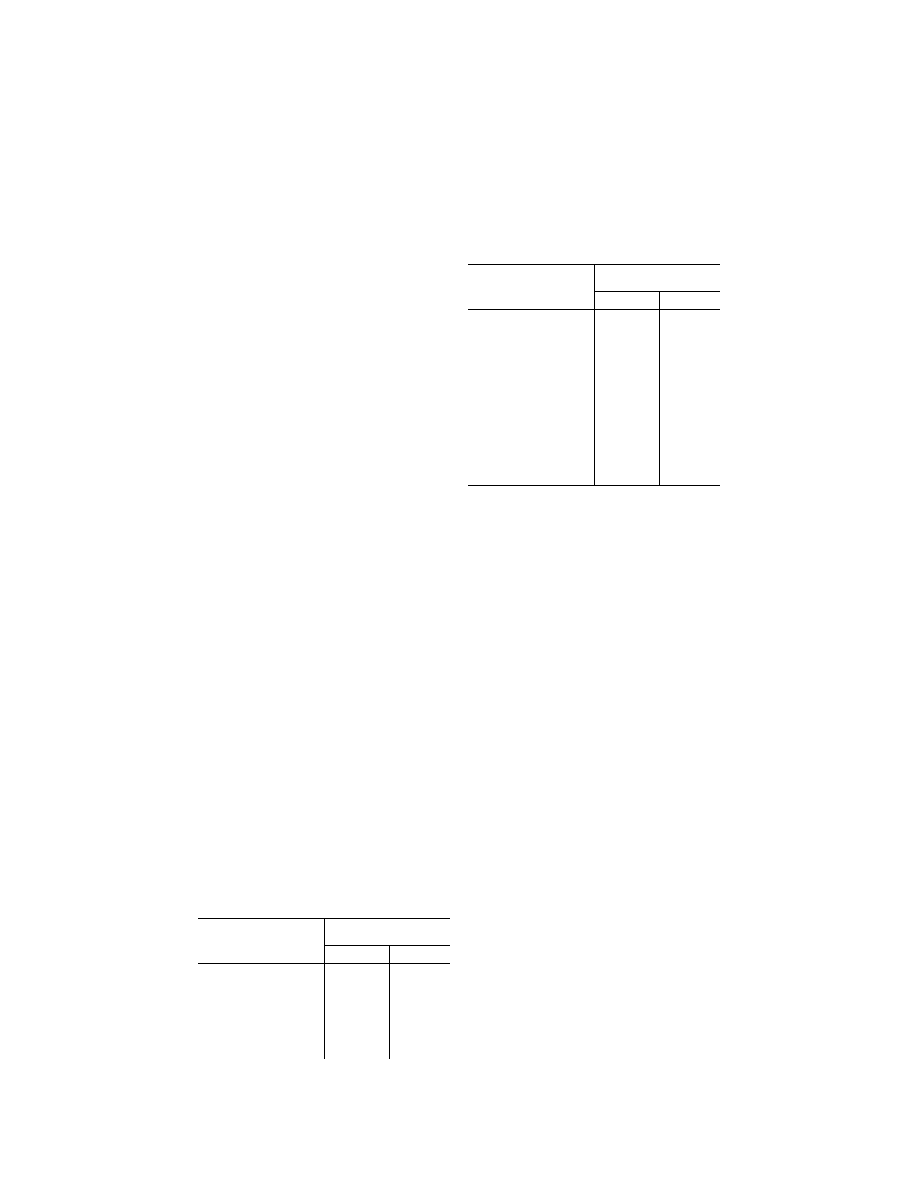
870
49 CFR Ch. I (10–1–23 Edition)
§ 175.630
medical-use compressed oxygen per
passenger needing oxygen at destina-
tion—with a rated capacity of 1000 L
(34 cubic feet) or less of oxygen—may
be carried in a Class B aircraft cargo
compartment or its equivalent.
(e) A cylinder containing medical-use
compressed oxygen, owned or leased by
an aircraft operator or offered for
transportation by a passenger needing
it for personal medical use at destina-
tion, may be carried in the cabin of a
passenger-carrying aircraft in accord-
ance with the following provisions:
(1) No more than six cylinders be-
longing to the aircraft operator and, in
addition, no more than one cylinder
per passenger needing the oxygen at
destination, may be transported in the
cabin of the aircraft under the provi-
sions of this paragraph (e);
(2) The rated capacity of each cyl-
inder may not exceed 1,000 L (34 cubic
feet);
(3) Each cylinder must conform to
the provisions of this subchapter and
be placed in:
(i) An outer packaging that conforms
to the performance criteria of Air
Transport Association (ATA) Specifica-
tion 300 for a Category I Shipping Con-
tainer; or
(ii) A metal, plastic or wood outer
packaging that conforms to a UN
standard at the Packing Group I or II
performance level.
(4) The aircraft operator shall se-
curely stow the cylinder in its over-
pack or outer packaging in the cabin of
the aircraft and shall notify the pilot-
in-command as specified in § 175.33 of
this part; and
(5) Shipments under this paragraph
(e) are not subject to—
(i) Sections 173.302(f) and 173.304(f) of
this subchapter, subpart C of part 172 of
this subchapter, and, for passengers
only, subpart H of part 172 of this sub-
chapter;
(ii) Section 173.25(a)(4) of this sub-
chapter; and
(iii) Paragraph (b) of this section.
[72 FR 4456, Jan. 31, 2007, as amended at 72
FR 55099, Sept. 28, 2007]
§ 175.630
Special requirements for Di-
vision 6.1 (poisonous) material and
Division 6.2 (infectious substances)
materials.
(a) [Reserved]
(b) No person may operate an aircraft
that has been used to transport any
package required to bear a POISON or
POISON INHALATION HAZARD label
unless, upon removal of such package,
the area in the aircraft in which it was
carried is visually inspected for evi-
dence of leakage, spillage, or other
contamination. All contamination dis-
covered must be either isolated or re-
moved from the aircraft.
(c) When unloaded from the aircraft,
each package, overpack, pallet, or unit
load device containing a Division 6.2
material must be inspected for signs of
leakage. If evidence of leakage is
found, the cargo compartment in which
the package, overpack, or unit load de-
vice was transported must be dis-
infected. Disinfection may be by any
means that will make the material re-
leased ineffective at transmitting dis-
ease.
[71 FR 14604, Mar. 22, 2006, as amended at 71
FR 32263, June 2, 2006; 80 FR 1164, Jan. 8, 2015;
85 FR 83402, Dec. 21, 2020]
§ 175.700
Special limitations and re-
quirements for Class 7 materials.
(a) Except as provided in §§ 173.4a,
173.422 and 173.423 of this subchapter,
no person may carry any Class 7 mate-
rials aboard a passenger-carrying air-
craft unless that material is intended
for use in, or incident to research (See
§ 171.8 of this subchapter), medical diag-
nosis or treatment. Regardless of its
intended use, no person may carry a
Type B(M) package aboard a passenger-
carrying aircraft, a vented Type B(M)
package aboard any aircraft, or a liq-
uid pyrophoric Class 7 material aboard
any aircraft.
(b)
Limits for transport index and criti-
cality safety index.
A person may carry
the following Class 7 (radioactive) ma-
terials aboard an aircraft only when—
(1) On a passenger-carrying aircraft—
(i) Each single package on the air-
craft has a transport index no greater
than 3.0;
(ii) The combined transport index
and the combined criticality index of

871
Pipeline and Haz. Matls. Safety Admin., DOT
§ 175.701
all the packages on the aircraft are
each no greater than 50.
(2) On a cargo aircraft—
(i) Each single package on the air-
craft has a transport index no greater
than 10.0.
(ii) The combined transport index of
all the packages on the aircraft is no
greater than 200, and the combined
criticality index of all the packages on
the aircraft is no greater than—
(A) 50 on a non-exclusive use cargo
aircraft, or
(B) 100 on an aircraft assigned for the
exclusive use of the shipper [offeror]
for the specific shipment of fissile
Class 7 material. Instructions for the
exclusive use must be developed by the
shipper [offeror] and carrier, and the
instructions must accompany the ship-
ping papers.
(3) The combined transport index and
combined criticality index are deter-
mined by adding together the transport
index and criticality index numbers,
respectively, shown on the labels of the
individual packages.
(c) No person may carry in a pas-
senger-carrying aircraft any package
required to be labeled RADIOACTIVE
YELLOW–II or RADIOACTIVE YEL-
LOW–III label unless the package is
carried on the floor of the cargo com-
partment or freight container.
[71 FR 14604, Mar. 22, 2006, as amended at 74
FR 2268, Jan. 14, 2009]
§ 175.701
Separation distance require-
ments for packages containing
Class 7 (radioactive) materials in
passenger-carrying aircraft.
(a) The following table prescribes the
minimum separation distances that
must be maintained in a passenger-car-
rying aircraft between Class 7 (radio-
active) materials labeled RADIO-
ACTIVE YELLOW–II or RADIOACTIVE
YELLOW–III and passengers and crew:
Transport index or sum of
transport indexes of all pack-
ages in the aircraft or
predesignated area
Minimum separation
distances
Centimeters
Inches
0.1 to 1.0 ...............................
30
12
1.1 to 2.0 ...............................
50
20
2.1 to 3.0 ...............................
70
28
3.1 to 4.0 ...............................
85
34
4.1 to 5.0 ...............................
100
40
5.1 to 6.0 ...............................
115
46
6.1 to 7.0 ...............................
130
52
7.1 to 8.0 ...............................
145
57
8.1 to 9.0 ...............................
155
61
Transport index or sum of
transport indexes of all pack-
ages in the aircraft or
predesignated area
Minimum separation
distances
Centimeters
Inches
9.1 to 10.0 .............................
165
65
10.1 to 11.0 ...........................
175
69
11.1 to 12.0 ...........................
185
73
12.1 to 13.0 ...........................
195
77
13.1 to 14.0 ...........................
205
81
14.1 to 15.0 ...........................
215
85
15.1 to 16.0 ...........................
225
89
16.1 to 17.0 ...........................
235
93
17.1 to 18.0 ...........................
245
97
18.1 to 20.0 ...........................
260
102
20.1 to 25.0 ...........................
290
114
25.1 to 30.0 ...........................
320
126
30.1 to 35.0 ...........................
350
138
35.1 to 40.0 ...........................
375
148
40.1 to 45.0 ...........................
400
157
45.1 to 50.0 ...........................
425
167
(b) When transported aboard pas-
senger-carrying aircraft packages,
overpacks or freight containers labeled
Radioactive Yellow–II or Radioactive
Yellow–III must be separated from live
animals by a distance of at least 0.5 m
(20 inches) for journeys not exceeding
24 hours, and by a distance of at least
1.0 m (39 inches) for journeys longer
than 24 hours.
(c) Except as provided in paragraph
(d) of this section, the minimum sepa-
ration distances prescribed in para-
graphs (a) and (b) of this section are de-
termined by measuring the shortest
distance between the surfaces of the
Class 7 (radioactive) materials package
and the surfaces bounding the space oc-
cupied by passengers or animals. If
more than one package of Class 7 (ra-
dioactive) materials is placed in a pas-
senger-carrying aircraft, the minimum
separation distance for these packages
shall be determined in accordance with
paragraphs (a) and (b) of this section
on the basis of the sum of the transport
index numbers of the individual pack-
ages or overpacks.
(d)
Predesignated areas.
A package la-
beled RADIOACTIVE YELLOW–II or
RADIOACTIVE YELLOW–III may be
carried in a passenger-carrying aircraft
in accordance with a system of
predesignated areas established by the
aircraft operator. Each aircraft oper-
ator that elects to use a system of
predesignated areas shall submit a de-
tailed description of the proposed sys-
tem to the Associate Administrator for
approval prior to implementation of
the system. A proposed system of
predesignated areas is approved if the

